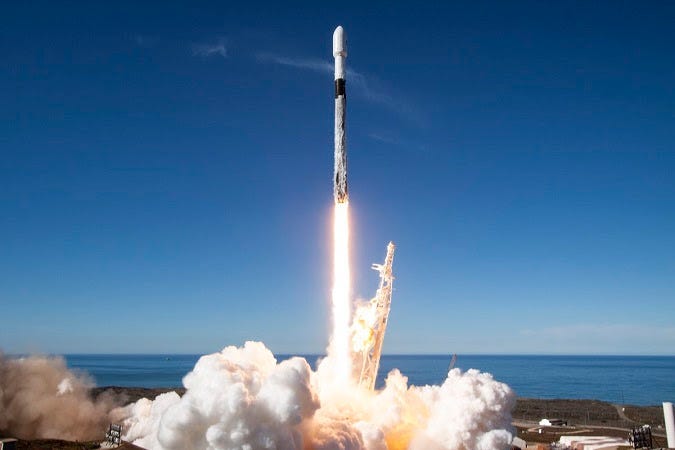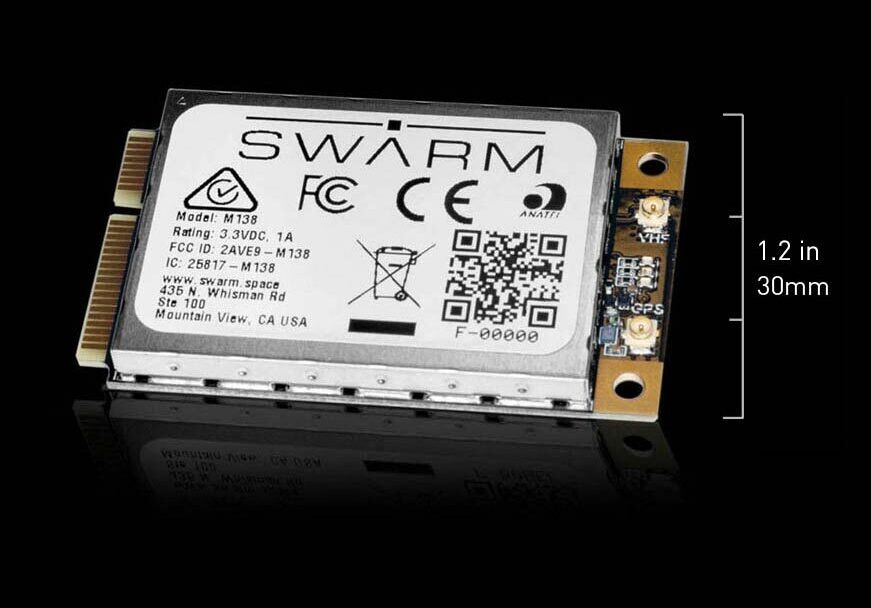
Swarm Grows Constellation to Seven Satellites with Recent Launch
September 1, 2020

We are happy to report that three new Swarm satellites launched into Low Earth Orbit (LEO) on the SpaceX SSO-A on December 3. They have been reporting their telemetry back to our ground stations and are in great health. SpaceBEE-5, SpaceBEE-6, and SpaceBEE-7 were granted launch approval and radio frequency communications testing approval by the FCC (0976-EX-ST-2018) earlier this fall. We thank the FCC for its smooth processing of this license. We now have seven Swarm satellites in LEO.
The December 3 launch was not only a major step forward for Swarm. It marked an important milestone for our industry overall: SpaceX reused its first stage Falcon 9 booster for the third time. My co-founder, Ben Longmier, and I were at Vandenberg Air Force Base for the launch and it was awe inspiring to watch it in person, see the exhaust flames, and hear the sonic boom as the first stage returned to land on a barge out at sea! Spaceflight Services did a great job managing and brokering this launch, which had 64 satellites in total.
Swarm made first contact with our satellites when they flew over our ground station shortly after they were deployed from the Spaceflight Services Lower Free Flyer craft. The satellite telemetry indicates all systems are nominal. Our satellite testing and operations will be ongoing.

All seven SpaceBEE satellites launched to date have been consistently tracked by both the Space Surveillance Network (SSN) and LeoLabs. A live tracking link for the first four satellites is here. The SpaceBEEs 1–4 have passive Van Atta array radar retro-reflectors, which were developed under a Cooperative Research and Development Agreement (CRADA) with the Space and Naval Warfare Systems Center Pacific, in order to enhance their trackability in space. Based on our initial results, the SpaceBEEs 1–4 have a larger radar cross-section and are more trackable than other CubeSats. Specifically:
- Radar Cross Section area is larger than other CubeSats in similar orbits
- Orbit accuracy is equal to or better than other CubeSats in similar orbits
- Swarm satellites are consistently tracked 24/7 and do not pose an orbital debris risk
Swarm uses vertical integration to rapidly iterate and build our satellites in-house, enabling us to deploy satellites faster than any other network. With the success of this latest wave of Swarm satellites, we move one step closer to achieving our mission of providing global, affordable connectivity for devices and people worldwide. We are excited to be moving rapidly toward deploying our global constellation in 2019.


